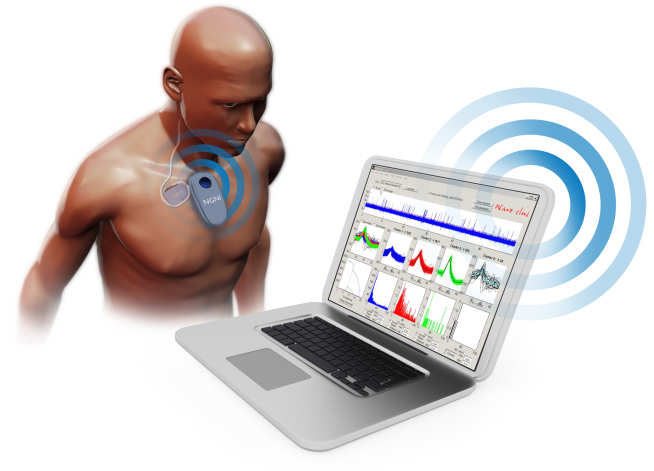iPROBE: in-vivo Platform for the Real-time Observation of Brain Extracellular activity
Research Topics
Underpinning research related to iPROBE in research topics:
Completed Project (2013-2016)
Research Team: Song Luan, Ian Williams, Lieuwe Leene, Yan Liu, Timothy Constandinou
Collaborators: Andrew Jackson (Newcastle), Kenneth Harris (UCL), Gyorgy Buzsaki (NYU)
Funding: Engineering and Physical Sciences Research Council (EPSRC) EP/K015060/1

Understanding how the trillions of action potentials of the brain's billions of neurons produce our thoughts, perceptions, and actions is one of the greatest challenges of 21st century science. Similarly, understanding how this activity is disrupted by neurological and psychiatric diseases is one of the greatest challenges of 21st century medicine.
Due to the massively parallel nature of the brain's computations, answering these questions experimentally relies on being able to monitor very large numbers of neurons simultaneously.
Advances in electrode microfabrication and high-throughput data analysis have allowed scientists to record from hundreds of neurons in a small local area of brain. However, as both healthy and unhealthy neural operation arises from interaction of multiple, widely-distributed brain circuits, its understanding requires a technological step-change that allows monitoring of much larger numbers of neurons over many brain areas.
Large-scale neuronal recording relies on the use of microfabricated multielectrode arrays (MEAs). Arrays capable of recording from hundreds of local neurons are now commercially available. In principle, these arrays provide the ability to record from thousands of neurons across multiple brain structures, simply by using a large number of probes simultaneously. However, accessing the data produced by these electrodes cannot be achieved with current technologies, as it is simply impossible to pass a sufficient number of very low amplitude analogue signals, as in current passive connection systems.
iPROBE addresses this by leveraging on communication protocols used commonly in high performance computing. By allowing simple, robust, and low-noise connection of several multi-electrode arrays, this will allow us to monitor thousands of neurons from multiple probe structures using a single communication interface.
iPROBE exploits cheap, commercially-available microelectrode arrays (eg. NeuroNexus), connected to a custom CMOS Integrated Circuit (IC) via high-density flexible ribbon cables. CMOS ICs are low cost, produce high yield and area efficient active electronics suitable for amplifying, filtering, analog-to-digital conversion and encoding of each electrode array's spiking neuron data. Each group of serially-connected probes will terminate into a standard USB interface. The new USB-3.0 protocol (marketed using the SuperSpeed term) can allow for serial data speeds of 5Gbps. For data sampled at 25kS/sec at 12-bit resolution, this could provide a bandwidth capable of supporting over 10,000 electrodes: two orders of magnitude beyond current technology.
Outcomes
The iPROBE project has resulted in a number of key outcomes. These include:
- New methods for clockless, continuous-time processing for neural spike detection and spike sorting. By exploiting such event-driven methods, all processing is event driven and therefore also the power consumption is activity dependant. For further details contact us, or see research publications (listed below);
- Three generations of low power, multi-channel neural recording integrated circuits (with pre-ampfification, filtering, 2nd gain stage and analogue to digital conversion) with serial digital communication interface;
- Key know-how within the NGNI Lab in low noise neural recording circuit design that has led to new projects and applications;
- Integrated and board-level hardware for electrical neural stimulation (supporting current, charge and voltage mode);
- New partnerships with industry related to research platforms.
Publications
Publications
2018
- Liu Y, Pereira JL, Constandinou TG, 2018, Event-driven processing for hardware-efficient neural spike sorting, JOURNAL OF NEURAL ENGINEERING, Vol: 15, ISSN: 1741-2560
2017
- Liu Y, Luan S, Williams I, Rapeaux A, Constandinou TG, 2017, A 64-Channel Versatile Neural Recording SoC with Activity Dependant Data Throughput, IEEE Transactions on Biomedical Circuits and Systems, Vol: 11, Pages: 1344-1355, ISSN: 1932-4545
2016
- Williams I, Rapeaux A, Liu Y, Luan S, Constandinou TG, 2016, A 32-Ch. Bidirectional Neural/EMG Interface with on-Chip Spike Detection for Sensorimotor Feedback, 12th IEEE Biomedical Circuits and Systems Conference (BioCAS), Publisher: IEEE, Pages: 528-531, ISSN: 2163-4025
- Luan S, Liu Y, Williams I, Constandinou TG, 2016, An Event-Driven SoC for Neural Recording, 12th IEEE Biomedical Circuits and Systems Conference (BioCAS), Publisher: IEEE, Pages: 404-407, ISSN: 2163-4025
- Leene LB, Constandinou TG, 2016, A 2.7 mu W/MIPS, 0.88GOPS/mm(2) Distributed Processor for Implantable Brain Machine Interfaces, 12th IEEE Biomedical Circuits and Systems Conference (BioCAS), Publisher: IEEE, Pages: 360-363, ISSN: 2163-4025
- Liu Y, Pereira JL, Constandinou TG, 2016, Clockless Continuous-Time Neural Spike Sorting: Method, Implementation and Evaluation, IEEE International Symposium on Circuits and Systems (ISCAS), Publisher: IEEE, Pages: 538-541, ISSN: 0271-4302
2015
- Faliagkas K, Leene LB, Constandinou TG, 2015, A Novel Neural Recording System Utilising Continuous Time Energy Based Compression, IEEE International Symposium on Circuits and Systems (ISCAS), Publisher: IEEE, Pages: 3000-3003, ISSN: 0271-4302
2014
- Leene LB, Constandinou TG, 2014, Ultra-low power design strategy for two-stage amplifier topologies, ELECTRONICS LETTERS, Vol: 50, Pages: 583-584, ISSN: 0013-5194
- Zheng L, Leene LB, Liu Y, Constandinou TG, 2014, An Adaptive 16/64 kHz, 9-bit SAR ADC with Peak-Aligned Sampling for Neural Spike Recording, IEEE International Symposium on Circuits and Systems (ISCAS), Publisher: IEEE, Pages: 2385-2388, ISSN: 0271-4302
2013
- Leene LB, Liu Y, Constandinou TG, 2013, A Compact Recording Array for Neural Interfaces, IEEE Biomedical Circuits and Systems Conference (BioCAS), Publisher: IEEE, Pages: 97-100, ISSN: 2163-4025


